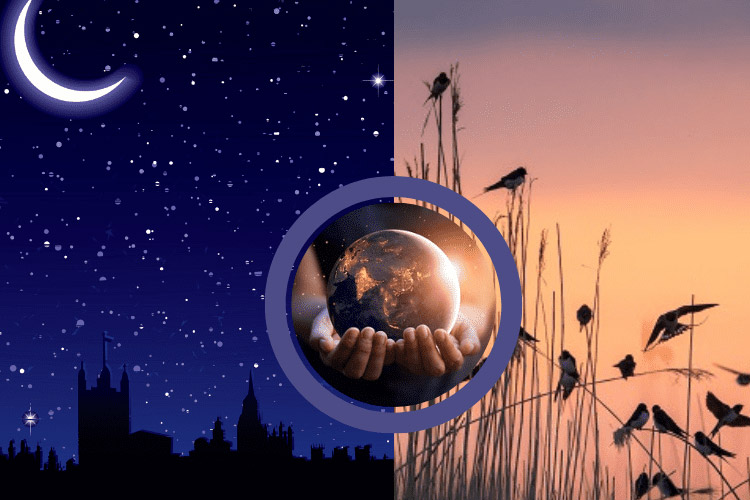The Design Lights Consortium recently shared highlights from a panel discussion in Honolulu about light pollution and the impacts of outdoor lighting:
(DLC, February 24, 2023) Located nearly 2400 miles from California and almost 4000 miles from the next nearest landmass, the Hawaiian archipelago is the most remote population center on Earth. Despite its location, however, scientists and ecologists say it is especially important to protect its night sky from light pollution.
Kicking off a panel discussion in Honolulu on February 2, DLC Executive Director and CEO Tina Halfpenny noted that Hawaii “is very unique, but the implications of outdoor lighting are not unique to Hawaii.”
So began an hourlong discourse about the consequences of light pollution, the urgent need to reduce the negative impacts of outdoor lighting, and strategies to preserve the night sky while saving energy.
Presented by Hawaii Energy, the DLC, and the Illuminating Engineering Society’s Honolulu Section, “Impacts of Outdoor Lighting: Considerations to Reduce Energy, Save Money and Minimize Light Pollution for People and the Environment” took place February 1, 2023 before a live audience at AIA Honolulu’s Center for Architecture and via webinar.
Panelists included DLC Senior Lighting Scientist Leora Radetsky; US Fish and Wildlife Service (USFWS) Hawaii and Pacific Islands Program Manager Sheldon Plentovich, Richard Wainscoat, who leads the University of Hawaii’s Institute of Astronomy; and Graceson Ghen, Hawaii County Manager for Hawaii Energy’s Energy Efficiency Program.
Wainscoat explained that, because it is situated near Earth’s magnetic equator, Hawaii’s natural night sky is darker than anywhere else in the U.S.
“We have a marvelous resource here and we need to protect it better,” said Wainscoat, whose work takes place largely at observatories at Mauna Kea on the Big Island of Hawaii and Haleakala on Maui.
He noted that even though Honolulu’s lights are almost 200 miles from Mauna Kea, they are still easy to see. Just over 100 miles from Honolulu, the sky over Haleakala is impacted too. On the island of Oahu, sky brightness ranges from twice as bright as is natural to 40 times brighter in Honolulu, where residents can no longer see the Milky Way.
“It could be recovered with more careful lighting,” Wainscoat added, noting that priorities for astronomers include avoiding blue/violet light, aiming lights downward, and turning off lights when not needed – a tactic that also results in energy savings.
Panel attendees learned that these strategies will also protect wildlife. For millennia, Plentovich said, animals and birds have relied on the moon and stars for navigation and the natural day-night cycle for feeding and nesting. Light pollution disrupts it all.
Astronomers have raised concern since 1970. Plentovich explained that light pollution has been increasing by about 10 percent annually for more than a decade. Artificial light disorients some species and repels others – effectively reducing their habitat. Meanwhile, birds and insects are attracted to artificial light and can become “trapped” in it until they collide with something or drop to the ground, exhausted and easy prey for predators. Insects – whose numbers have steadily dropped over the past few decades – pollinate 75 percent of the plants we eat. Plentovich warned that “our existence depends on their existence.”
On Oahu, Plentovich leads USFWS projects to restore, protect, and expand nesting habitat for Hawaiian seabirds, Hawaiian yellow-faced bees, and Hawaiian green sea turtles (also called honu). She said more than 1200 “fallen” seabirds have been rescued and rehabilitated in Hawaii over the past two years during what biologists call “Fallout Season” – the time when fledglings first leave their nests.
She also described how the Hawaiian honu population and habitat have been decimated by human activity and natural disasters, and are further threatened by rising sea levels. While the USFWS successfully relocated some honu to Oahu, where there were 67 nests in 2021, light pollution on the island is threatening the survival of the nests. Honu hatchlings emerge at night and navigate toward the brightest horizon – which under natural conditions, points them toward the ocean sparkling with moon and star light. But artificial light tricks them into walking in the opposite direction, Plentovich said. Many end up inland, on roads, and even in public restrooms, becoming easy prey or dying of exhaustion and dehydration.
“We are in a pants- on-fire situation,” she said.
With the problems of light pollution outlined, panelists turned to strategies to reduce impacts. Ghen noted that the Big Island recognized the need to limit light pollution decades ago and adopted the county’s Article 9 lighting ordinance in 1989. That worked well for low-pressure sodium lighting, but the arrival of LEDs required a new solution. A project to convert streetlights to LEDs emitting less than 2 percent blue light began in 2013. By 2017, with the help of Hawaii Energy rebates, all the island’s streetlights were converted.
Ghen said first year peak energy savings from the project totaled 330 kilowatts and over 2,170,000 kilowatt hours – representing over 4.4 million pounds of avoided CO2 production.
Radetsky outlined the DLC’s Seven Strategies to Minimize Negative Impacts of Outdoor Light at Night and the DLC’s LUNA Technical Requirements for commercial and industrial lighting products “that minimize light pollution…and that work well for us and for every other organism.” Although some environmentally sensitive areas benefit from non-white (amber) lighting products, they are not included in LUNA because the industry has not yet set non-white light standards, said Radetsky. She recently co-authored a journal article that proposes a specification structure for amber light sources and encourages lighting standards development organizations to consider standardizing such a system.
The panel illustrated the extent to which light pollution is a global problem with local solutions. In Hawaii and everywhere else, cities, towns, utilities, and lighting solutions providers must work together with community members to find appropriate and responsible solutions for people and the environment. Watch a recording of the panel discussion here.
Tagged with dark sky, DLC, light pollution, lightED